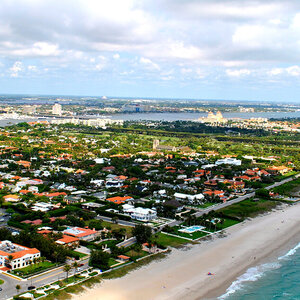The WPJ
THE WORLD PROPERTY JOURNALReal Estate Facts Not Fiction
Commercial Real Estate News

Fueled by E-Commerce Demand, Global Prime Logistics Rents Rise
Commercial News » Hong Kong Edition | By Michael Gerrity | May 18, 2016 8:00 AM ET
Hong Kong, Tokyo, London top ranks of most expensive markets
According to CBRE Group Inc. 's inaugural Global Prime Logistics Rents report, voracious global demand for e-commerce fulfillment centers and distribution centers fueled a 2.8 percent year-over-year increase in prime logistics rents globally, led by double-digit percentage gains in U.S. coastal markets. Six of the top 10 markets with the fastest growing prime logistics rents globally were in the U.S., led by Oakland, Calif., with a nearly 30 percent gain.
American seaports and inland ports aren't among the world's most expensive for logistics rents, but they did post the largest gains in 2015 due mostly to the increasing flow of goods into and throughout the region from online sales. In addition to Oakland in the No. 1 spot, U.S. cities in the top 10 for fastest growing prime logistics rents include New Jersey at No. 2; the Inland Empire at No. 3; Los Angeles-Orange County at No. 7; Dallas-Fort Worth at No. 8; and Atlanta at No. 9.
Another two of those top 10 for rent increases are elsewhere in the Americas: Santiago, Chile, and Ciudad Juárez, Mexico.
The sharp rise in prime rents in the Americas was largely due to massive growth in U.S. coastal markets, where relentless occupier demand drove up pricing. In Oakland, desire for quality premises is the dominant factor for inner-bay logistics users despite the high cost. New development in some markets, such as the Inland Empire, is commanding premium rates. In Latin America, Santiago and Ciudad Juarez notched increases in prime rent of 10.9 percent and 10.2 percent, respectively. In São Paulo, prime rents were down 10.5 percent year-over-year.
Much of the upward pressure in rents in logistics markets in the Americas and globally is stoked by a supply chain arms race of sorts among retailers, shippers and suppliers seeking accommodate the continued growth of e-commerce. In heavy demand are modern distribution centers and fulfillment centers with features such as a high loading dock ratio and clear ceiling heights of at least 26 feet to accommodate high-tech stacking racks and automated storage-and-retrieval systems. Many such facilities are being built close to large population centers, where land costs are high.
"Global consumer demand is strong, and an ever-increasing share of retail sales are taking place online," said Richard Barkham , CBRE's global chief economist. "That is prompting traditional retailers, e-commerce companies and third-party logistics firms to seek out advanced 'prime' logistics warehouses to modernize their supply chains and thus facilitate the rapid delivery of goods."
Overall, growth in prime logistics rents in the Americas last year (up 5.6 percent) outpaced that in Asia (up 2.5 percent) and in Europe, the Middle East and Africa (up 0.8 percent). Prime rents are the highest achievable rents for a logistics facility of the highest quality and specification.
"E-commerce demand is acute in the Americas, and rent in the U.S. is growing from a relatively low base given the abundance of developable land here," said David Egan , CBRE's head of industrial and logistics research in the Americas. "Developers are building and delivering more logistics buildings, but that new supply can't keep up with demand. Therefore, industrial occupiers should expect to see rents rising for a while longer."
Still, American logistics markets have a lot of ground to make up before they rank among the world's most expensive. That distinction goes to densely populated markets with higher land costs. Last year's most expensive markets are led by Hong Kong with an annual prime rent of US$28.94 per sq. ft. per annum, Tokyo ($16.74), London ($16.36), Singapore ($10.91) and Stockholm ($9.90). The most expensive market in the Americas was Los Angeles-Orange County, ranked 12th globally at US$8.04 per sq. ft. per annum.
CBRE tracks prime rents in 68 logistics hubs around the world. Fifty-nine percent (40 markets) of tracked markets saw year-over-year increases in rents, 25 percent (17 markets) saw no change and only 16 percent (11 markets) saw decreases. To focus this report solely on prime facilities, CBRE limited its scope to buildings larger than 100,000 sq. ft. (10,000 sq. m.), with ceiling heights greater than 26 to 36 feet (eight to 10 meters) and a loading-dock ratio of one dock to 10,000 sq. ft., among other criteria.
Global Prime Logistics Rents
Sign Up Free | The WPJ Weekly Newsletter
Relevant real estate news.
Actionable market intelligence.
Right to your inbox every week.
Real Estate Listings Showcase
Related News Stories
Commercial Real Estate Headlines
- 2025 Prediction: U.S. Commercial Investment Recovery Expected to Gain Traction
- Holiday Retail Sales for 2024 to Hit Record $1 Trillion
- Tech, AI Industries Drive Largest Share of Office Leasing Activity in U.S.
- Commercial Real Estate Lending in U.S. Enjoys Strong Growth in Q3
- U.S. Multifamily Market Begins Recovery in Q3
- Commercial Investment in Japan Spikes 24 Percent Annually in Q3
- Despite Return-to-Office Mandates, U.S. Office Vacancies Continue to Rise
- PROPSIG Tech Startup Acquired by World Property Data
- U.S. Commercial Mortgage Debt Hits $4.7 Trillion in Q2 as Delinquencies Increase
- Hong Kong Class A Office Rents Continue to Downtick in Mid-Summer
- U.S. Office Landlords Tenant Concessions Decline for First Time in 4 Years
- U.S. Commercial Mortgage Originations Spike 27 Percent in Q2 Over Q1
- Phnom Penh's Commercial Office, Retail Markets Face Slowdowns in 2024
- Global Edge Data Center Market to Hit $300 Billion by 2026
- Commercial Property Transactions in Japan Dive 25 Percent Annually in Q2
- Delinquency Rates for U.S. Commercial Property Loans Downticks in Q2
- Megawarehouse Lease Deals in U.S. Increase in 2024
- Office Tenants' Flight to Quality Buildings Increases in 2024
- Commercial Lending in Japan Upticks 6 Percent Annually in Q1
- AI Driving Significant Global Data Center Growth in 2024
- Total U.S. Commercial Mortgage Debt Rises to $4.7 Trillion in Q1
- U.S. Commercial Mortgage Delinquencies Rise in Early 2024
- Asia Pacific Office Sector to Further Reprice Throughout 2024
- U.S. Retail Foot Traffic to Surpass Pre-Pandemic Levels by 2025
- Commercial Real Estate Lending in U.S. Slowed in First Quarter
- Japan Commercial Property Investment Volume Jumps 7 Percent in Q1
- Asia Pacific Commercial Property Investment Leads the World, Spikes 13 Percent
- Driven by High Rates, U.S. Commercial Lending Imploded 47 Percent in 2023
- After Two Year Slump, Prime Multifamily Metrics Uptick in U.S.
- Commercial Co-Broker Commissions Not Affected by NAR-DOJ Settlement, Yet
- U.S. Office Buildings with Upscale Tenant Amenities Still Enjoy Premium Rents in 2024
- U.S. Commercial, Multifamily Mortgage Delinquency Rates Uptick in Q4
- U.S. Commercial Mortgage Debt Continued to Rise in 2023, Hits $4.7 Trillion
- Nonresidential Construction Spending in the U.S. Falls Sharply in January
- U.S. Multifamily Construction Starts to Decline in 2024
- Commercial Mortgage Lending in U.S. Shows Signs of Stabilization in Late 2023
- Architecture Billings Decline in December as Soft Business Conditions Persist
- Government Sector Claimed Largest Portion of 100 Biggest U.S. Office Leases Signed in 2023
- U.S. Commercial, Multifamily Borrowing Dives 25 Percent Annually in Late 2023
- Record High Multifamily Construction Deliveries Drive Vacancy Rates Higher
Reader Poll
Marketplace Links
This website uses cookies to improve user experience. By using our website you consent in accordance with our Cookie Policy. Read More





